NOTE: this software is for Classic Mac OS (eg: OS 9) and cannot be used on Mac OS X.
Nisus Writer Classic is no longer for sale. This page is only for archival purposes.
Having spent much of the night awake wondering what Don Diego
de la Escribir would learn about Dawn, Ben awoke late. The Macintosh had already
turned itself on and, along with the Startup applications Nisus Writer's
InitInit macro had begun. There, before him, was his diary. It had clocked
him in at the time he had anticipated starting his work, and now that insistent
question faced him on the monitor:
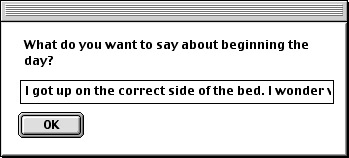
Ben didn't have anything particularly meaningful to report. But, at least he was
honest with himself. He pressed
Return on the keyboard and the macro pasted
his comments (up to 256 characters - he had to keep those first comments pithy)
into his diary. He knew he could not slack off because he'd arranged his macro
to ask him for a simile each morning:
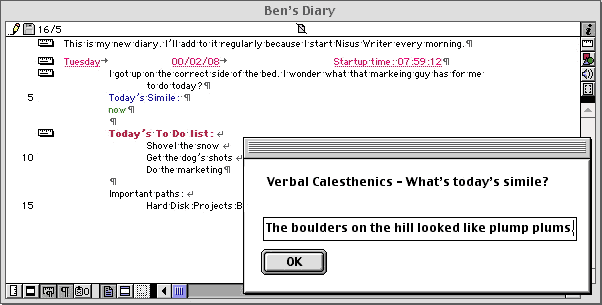
This time, after pressing
Return he saw his file open before him with the
persistent flashing I-beam insertion point awaiting his next (unstructured - finally)
thoughts.
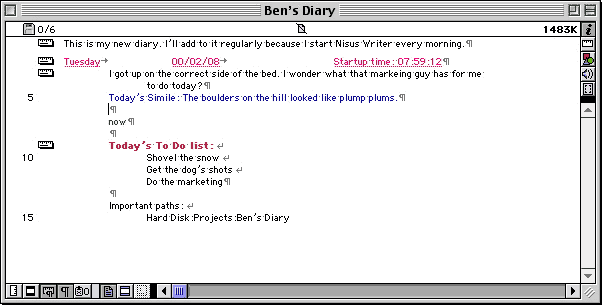
How had he gotten to this? How had he allowed his computer, a mere tool, to organize
and prompt his life?
To create a "Diary" file that opens at Startup:
-
Create a new file and put in the named rulers you want (so you can have
the macro call them later).


-
Save the file in a safe place (but don't close it). Save it somewhere you
don't think you'll need to move often. You'll want the macro to find it
easily. Remember, a macro is not smart. It can only find the file if you've
not moved it.
-
If you have the macro Copy Pathname handy, run it. If not, open the
Clipboard and write the following:
clipboard=docpath
That's "macrospeek" for put the path to the document on the clipboard.
-
Select the text on the Clipboard and choose Execute Selection from
the Macros submenu of the Gear or Cogwheel menu.
-
Paste the pathname into your diary and save the file. You'll want it for later.
-
Type a few return characters and then type the word "now" or something like
that to serve as a marker for where the past and the future separate.
Make sure you have one "empty" paragraph above the word "now."
-
Select that word and choose Mark... from the Tools menu.
-
In the dialog that appears click Set.
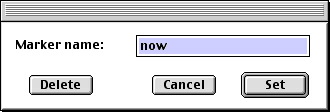
We're now ready to create the macro that does the work.
To create a macro that runs at startup of Nisus Writer and opens a file:
-
Choose New Macro Command from the Macros submenu of the Gear
or Cogwheel menu.
If you have more than one macro file open you will see a dialog asking in which
file you want to put the macro and what you want to call it.
-
Make sure the new command is in the Nisus Macros file and name the file
InitInit, then click Name.

InitInit is "Macrospeak". It comes from an extension of the word "initial" as
in "first" and means: "Initial Initial" or "First First" or, in simple English:
"Start this when I start Nisus Writer."
-
The Nisus Macros file window opens. There you should type the following:
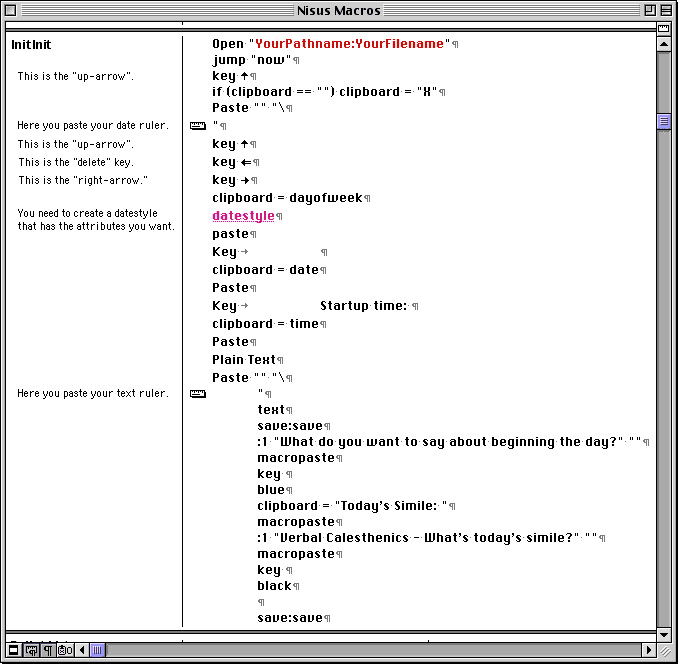
-
Save the macro file.
All this is wonderful. But most diaries have entries more than just at the beginning
of the day. Ben makes his coffee and has breakfast, accomplishes a few chores and then
gets down to the serious work. He needs an easy way to get back to his file.
To add information to your diary at will:
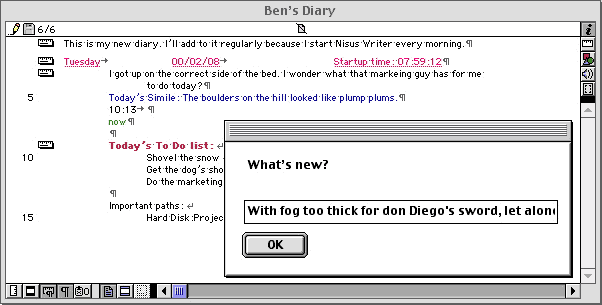
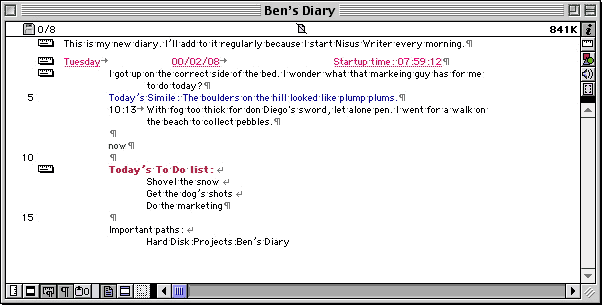
Two little macros take care of this. You remember how to create a new macro command.
Then proceed by typing the text you see in the following screen shot of the Nisus
Macros editing window.
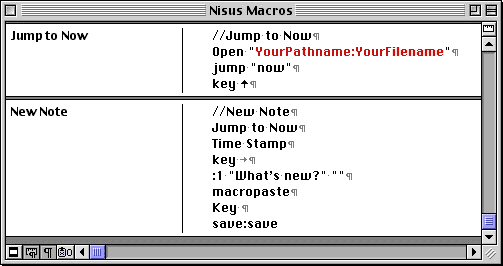
If you add a keyboard shortcut to each of these macros (as Ben has done) you can
easily get to this whenever you need. Try COMMAND-NN for "New Note" and COMMAND-NOW
for "Jump to Now".
To the
FAQ (Frequently Asked Questions).
To the
Tips Table of Contents.










